Types of Bollards and Their Uses
Fixed Bollards – Description and common applications
Fixed bollards are the stalwart guardians of urban landscapes, standing unwavering against the chaos of traffic and the unpredictable forces of nature. Their solid construction and permanence make them an indispensable element in safeguarding pedestrian zones, retail precincts, and critical infrastructure. When security and durability are paramount, fixed bollards provide the reassurance needed to prevent unauthorised vehicle access and protect valuable assets.
Typically crafted from robust materials such as steel, concrete, or iron, fixed bollards are embedded directly into the ground, creating an unyielding barrier. Their design varies—from slim, sleek profiles that blend seamlessly into modern aesthetics to more imposing structures that command attention. Common applications include delineating pedestrian walkways, securing building entrances, and forming perimeter security in sensitive areas.
In some contexts, the versatility of bollards becomes apparent. They can be painted with reflective coatings for visibility or incorporated with lighting features to enhance nighttime safety. Whether serving as a visual deterrent or a physical barrier, the fixed bollard’s role in urban planning remains unchallenged, offering a blend of form and function that continues to evolve with our cities’ needs.
Removable Bollards – Features, advantages, and scenarios for use
Removable bollards are the chameleons of urban security, blending practicality with adaptability. Unlike their fixed counterparts, these versatile barriers can be easily removed or repositioned, making them ideal for environments that require flexible access control. Whether for special events, emergency vehicle access, or seasonal adjustments, removable bollards offer a level of convenience that static barriers simply can’t match.
One of the most compelling features of bollards is their ability to transform a space swiftly. With a simple lifting mechanism or lock-and-key system, they can be deployed or retracted, granting temporary clearance or establishing a secure perimeter with minimal fuss. This flexibility proves invaluable in settings like city centres, where pedestrian zones may need to expand for festivals, or in private estates requiring controlled vehicle access.
The advantages of bollards extend beyond adaptability. They are often made from durable materials such as stainless steel or galvanised steel, ensuring longevity despite exposure to the elements. In situations demanding enhanced visibility, bollards can be painted with reflective coatings or fitted with lighting features, heightening safety during night-time hours.
- Temporary security zones during public events
- Emergency vehicle access in critical infrastructure areas
- Seasonal adjustments in retail or entertainment districts
In the grand tapestry of urban planning, removable bollards serve as the elusive guardians—ready to stand firm or step aside, depending on the needs of the moment. Their ability to seamlessly switch roles makes them a cornerstone in the evolving story of city security and design innovation.
retractable Bollards – Mechanisms and security benefits
Among the diverse spectrum of bollards, retractable bollards stand out as a marvel of engineering and versatility. Their sleek mechanisms allow them to rise to the occasion—or sink discreetly into the ground—adapting to fluctuating security needs with astonishing ease. This sophisticated movement is often powered by hydraulic or electromagnetic systems, ensuring seamless operation even under heavy usage. The security benefits are substantial; when deployed, retractable bollards create an impenetrable barrier, deterring unauthorised vehicles from encroaching on sensitive zones.
What truly sets retractable bollards apart is their ability to strike a balance between accessibility and protection. They are ideal for high-profile events, where crowd control is paramount, or in city centres that need to accommodate emergency vehicles swiftly. The robust construction—typically galvanised steel or stainless steel—resists corrosion and vandalism, ensuring longevity under varying weather conditions. For added safety during night-time operation, some models come equipped with reflective coatings or integrated lighting, heightening visibility and minimising accidents.
In essence, retractable bollards are the unsung heroes of urban security—quietly standing guard until called into action. Their mechanisms, whether manual, hydraulic, or electromagnetic, offer a crucial layer of flexibility to modern cityscapes, blending functionality with aesthetic appeal. When considering bollards for your environment, the choice of retractable models can provide an elegant solution that adapts to your evolving needs.
Aesthetic Bollards – Design considerations and urban beautification
Urban landscapes are constantly evolving, and the role of bollards extends far beyond mere security. Among the various types, aesthetic bollards have become a vital element in shaping cityscapes that are both functional and visually appealing. These decorative bollards serve as more than just barriers; they are statements of design, blending seamlessly into the architectural fabric of modern environments.
Design considerations for aesthetic bollards are rooted in their ability to enhance the overall urban experience. Crafted from materials like corten steel, aluminium, or even customised colour palettes, these bollards add colour, texture, and personality to public spaces. They can be slim and minimalist or bold and ornate, depending on the desired visual impact. Reflective coatings or integrated lighting further heighten their visual appeal, especially during night-time, creating a safe yet inviting atmosphere.
In many bustling city centres, aesthetic bollards act as a subtle yet powerful tool for urban beautification. Their presence can delineate pedestrian zones, guide foot traffic, or highlight historical districts without overwhelming the charm of the surroundings. For a harmonious blend of safety and style, they often feature intricate patterns or artistic embellishments, transforming simple protective devices into public art. Here’s how they typically find their perfect application:
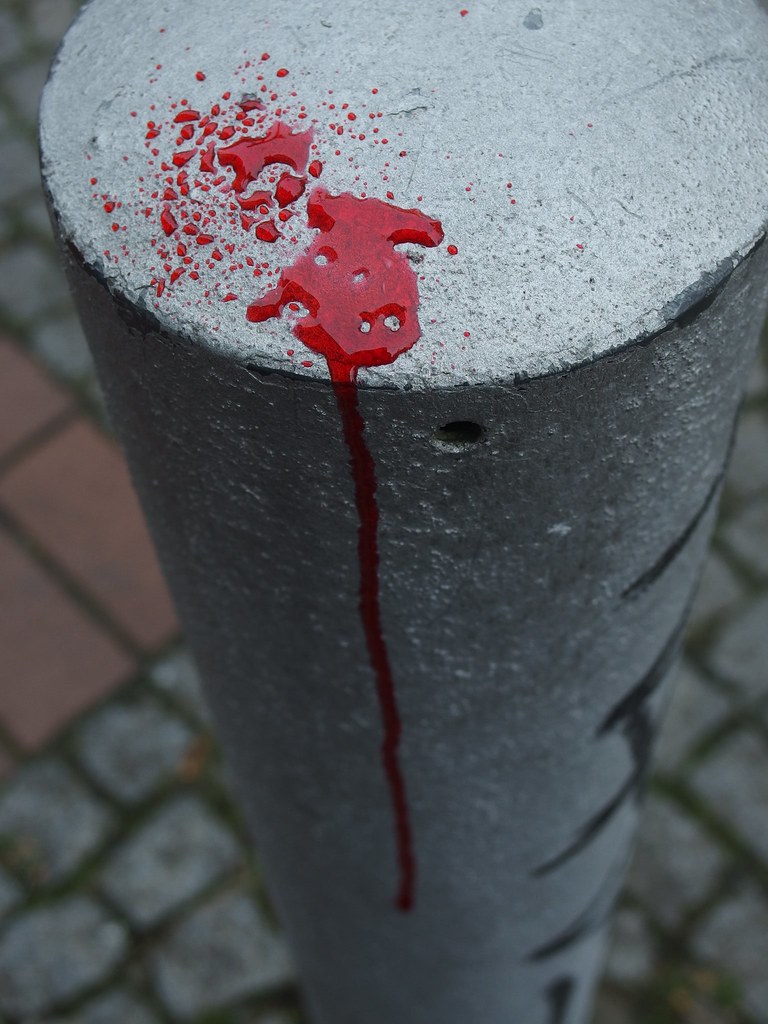
- Enhancing city aesthetics without compromising safety
- Complementing architectural themes and urban design
- Creating visually cohesive streetscapes that promote pedestrian enjoyment
Ultimately, the true beauty of aesthetic bollards lies in their adaptability. They prove that safety measures need not be utilitarian eyesores but can elevate the character of a space. From bustling shopping districts to serene parks, these carefully designed bollards are the unsung heroes of urban beautification, weaving security with style in a tapestry of city life. Their careful integration ensures that every street corner and public square not only functions efficiently but also invites admiration and pride from those who pass through.
Material Options for Bollards
Steel and Stainless Steel – Durability and corrosion resistance
When it comes to bollards, choosing the right material can feel like selecting a knight for your urban fortress—strength, durability, and resilience are non-negotiable. Steel and stainless steel dominate the scene, offering a formidable combination of durability and corrosion resistance. Unlike their more delicate cousins, these materials shrug off the harshest weather conditions and the relentless assault of urban pollution, ensuring your bollards remain pristine for years to come.
Steel bollards, often prized for their robustness and affordability, are like the workhorses of the bollard world. They provide sturdy protection, whether guarding a loading bay or delineating pedestrian zones, all without breaking the bank. Meanwhile, stainless steel takes the glamour route—glossy, sleek, and resistant to rust, making it perfect for high-profile urban beautification projects where aesthetics matter just as much as security.
- High tensile strength for maximum resilience
- Corrosion resistance to withstand the elements
- Low maintenance requirements, saving time and money
If you’re aiming for a harmony of form and function, stainless steel bollards are the high-tech armour your design deserves. They stand tall against corrosion, making them ideal for coastal cities or anywhere with a relentless climate assault—because nobody wants their bollards to turn into rusted relics faster than you can say “urban decay”.
Concrete and Stone – Strength and aesthetic appeal
When it comes to selecting materials for bollards, concrete and stone stand out for their remarkable strength and timeless aesthetic appeal. These materials are often chosen for their ability to blend seamlessly into urban environments while providing formidable protection. Concrete bollards, in particular, are incredibly versatile—they can be cast into various shapes and sizes, making them suitable for both functional and decorative purposes.
Stone bollards, on the other hand, exude a sense of permanence and elegance. Natural stone such as granite or limestone not only resists wear and tear but also enhances the visual harmony of historical districts and modern cityscapes alike. Their durability ensures that bollards made from stone remain pristine for decades, often becoming an integral part of the city’s character. For those aiming to combine strength with style, these options are hard to beat.
Recycled Materials – Eco-friendly options and sustainability
In a world increasingly conscious of environmental impact, the choice of materials for bollards transcends mere aesthetics and functionality. Recycled materials offer a compelling alternative—combining sustainability with durability. By repurposing waste, such as reclaimed plastics and metals, manufacturers craft bollards that stand resilient against the elements while championing eco-friendly principles.
These sustainable options not only reduce landfill waste but also contribute to greener urban development. Some innovative bollard designs incorporate recycled rubber or composite materials, creating structures that are both robust and environmentally responsible. Choosing recycled bollards is more than a trend; it’s a conscious step towards aligning urban infrastructure with ecological integrity.
Furthermore, the utilisation of recycled materials can often lead to cost-effective solutions without sacrificing quality. As cities seek to embrace greener futures, the integration of eco-friendly bollards becomes a vital aspect of sustainable planning—proving that strength and sustainability can indeed walk hand in hand.
Composite Materials – Innovative solutions and maintenance benefits
Composite materials are revolutionising the world of bollards, offering innovative solutions that blend strength with style. Unlike traditional options, these materials often combine fibres, plastics, and resins to produce structures that are lightweight yet incredibly durable. The versatility of composite bollards means they can be customised to fit various urban aesthetics while providing long-lasting performance.
One of the key maintenance benefits of composite bollards is their resistance to corrosion and environmental wear. Unlike steel or concrete, they require minimal upkeep, saving time and costs over their lifespan. Additionally, composite materials are inherently resistant to cracking, chipping, and vandalism—making them ideal for high-traffic areas and public spaces.
Furthermore, composite bollards can often be fabricated using recycled materials, enhancing their eco-friendly credentials. This sustainable approach not only reduces waste but also aligns with the growing demand for greener urban infrastructure. With their blend of resilience and environmental responsibility, composite bollards are paving the way for smarter, more sustainable city planning.
Bollard Design and Customization
Urban Planning and Aesthetic Integration – Design compatibility with cityscape
In the twilight realm of urban design, bollards transcend mere safety barriers—they become silent sentinels that shape the soul of a cityscape. Their design and customization are not just about function but an artful dance with the environment. When carefully crafted, bollards can seamlessly blend into the aesthetic fabric of a locale, turning utilitarian objects into landmarks of urban elegance.
Urban planning demands a delicate balance; bollards must serve their protective purpose while enhancing the visual narrative. This is where aesthetic integration becomes paramount. Thoughtfully designed bollards can evoke historical gravitas or contemporary minimalism, making them vital tools in city beautification.
Some cities now employ a strategic approach to design compatibility, using
- materials that echo surrounding architecture
- colour palettes that harmonise with the environment
- shapes that complement urban lines
ensuring they do not clash but rather converse with their surroundings. When designed with intent, bollards become more than barriers—they become part of the city’s poetic tapestry.
Security Features – Crash resistance and anti-ram protection
In the shadowed corridors of urban defence, bollards emerge as silent sentinels—guardians not only of safety but of sovereignty. Their design must marry resilience with artistry, transforming utilitarian objects into symbols of strength and subtlety. When crafted with meticulous intent, bollards embody a fusion of form and function, standing as formidable barricades against the chaos of reckless intrusion.
Security features are paramount—especially crash resistance and anti-ram protection. These qualities ensure that bollards can withstand the brutal onslaught of high-impact collisions, safeguarding pedestrians and critical infrastructure alike. To achieve this, manufacturers often incorporate reinforced materials and innovative mechanisms that absorb and dissipate force, thwarting would-be ram-raiders.
- High-strength steel cores
- Impact-resistant coatings
- Embedded security sensors
Such features are not mere enhancements but essential components of modern bollard architecture, turning them into impenetrable fortresses when the urban landscape demands it.
Lighting and Signage – Enhancing visibility and communication
Bollards are more than mere barriers; they are integral to urban design and safety. Their visual appeal can be enhanced through thoughtful design and customisation, ensuring they blend seamlessly into their surroundings. From sleek modern finishes to ornate decorative styles, bollards can be tailored to reflect the character of any environment.
Lighting and signage play a pivotal role in elevating their functionality. Illuminated bollards improve visibility at night, guiding pedestrians and drivers alike. Meanwhile, integrated signage on bollards communicates important messages—such as directional cues or safety warnings—without cluttering the landscape.
Customisation options are vast—colour, material, and form can be adapted to meet specific aesthetic and security needs. For instance, high-visibility colours enhance safety, while customised patterns add a unique touch to public spaces. When combined with effective lighting and signage, bollards become both practical and visually compelling elements of urban infrastructure.
Themed and Artistic Bollards – Adding character and identity
Within the labyrinth of urban architecture, bollards emerge as silent sentinels—each a canvas imbued with potential beyond mere functionality. The art of bollard design transforms utilitarian objects into statements of character and identity, forging a dialogue between space and observer. When approached with a sculptor’s sensibility, bollards become themed and artistic elements—each curve, colour, and motif carefully curated to echo the environment’s soul.
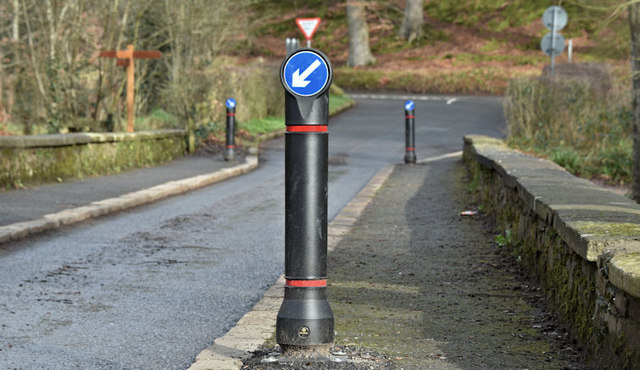
Customisation elevates bollards from simple safety devices to iconic markers. Imagine bespoke patterns etched into their surfaces, or vibrant hues that punctuate city streets with life and vibrancy. Such thoughtful detail not only enlivens public spaces but also bolsters their visual cohesion. In fact, the strategic integration of themed bollards—be it vintage, futuristic, or organic—can dramatically influence the perception of an area, imbuing it with distinct personality.
Whether crafted from steel, concrete, or eco-friendly recycled materials, bollards can be tailored to resonate with their surroundings, forging a harmonious blend of aesthetics and security. Their form may be sleek and modern, or ornate and decorative, each choice reinforcing the narrative of the space they inhabit. As guardians of urban landscapes, these customised, artistic bollards celebrate creativity, resilience, and the enduring power of design to shape human experience in shared environments.
Installation and Maintenance
Installation Processes – Basics of bollard installation
In the intricate dance of urban design, installing bollards is a meticulous choreography that demands precision and care. A well-executed installation transforms these sturdy sentinels from mere objects into guardians of safety and aesthetics. The process begins with selecting the appropriate site, where the terrain’s strength and the bollard’s purpose align seamlessly.
For most installations, the foundation is the backbone of durability. Excavation creates a cavity, carefully measured to accommodate the bollard’s base. Once positioned, the bollard is anchored with concrete—an act of permanence that ensures stability against the relentless forces of nature and man.
- Ensure the ground is level and compacted for optimal support.
- Use precise measurements to align each bollard perfectly.
- Allow sufficient curing time for the concrete to reach full strength.
Maintenance, on the other hand, is an ongoing dialogue of vigilance. Regular inspections for corrosion, paint chipping, or structural shifts keep bollards resilient and effective. For stainless steel or recycled materials, cleaning with gentle solutions preserves their luster, while concrete bollards may require touch-ups to combat weather-induced wear. Proper upkeep ensures that these urban sentinels continue to serve, protect, and define the character of their environment for decades to come.
Regulations and Compliance – Ensuring safety standards are met
Ensuring that bollards meet rigorous safety standards is essential not only for legal compliance but also for the protection of pedestrians, vehicles, and property. Regulatory frameworks governing bollard installation and maintenance vary across jurisdictions, but universally, adherence to safety regulations is non-negotiable. Regular inspections are fundamental—checking for corrosion, structural integrity, and proper alignment helps prevent accidents and prolong the lifespan of these urban fixtures.
To streamline compliance, many authorities require documentation of installation procedures, material specifications, and maintenance routines. For example, safety standards often specify minimum height and visibility requirements, which are crucial for effective deterrence and protection. Incorporating lighting or reflective elements into bollards enhances their visibility during low-light conditions, further adhering to safety regulations.
In some cases, a mandatory inspection schedule is prescribed, often including:
- Visual assessments for damage or wear
- Structural integrity tests
- Cleaning and corrosion prevention checks
Failure to comply with these regulations can lead to legal liabilities and compromised safety. Therefore, a proactive approach—aligning maintenance practices with regulatory demands—ensures bollards continue to serve their protective function while maintaining aesthetic harmony within the urban landscape.
Maintenance Tips – Cleaning, inspections, and longevity
Ever noticed how a simple bollard can silently safeguard an entire urban ecosystem? Their quiet vigil is only as effective as the care they receive. Regular cleaning of bollards not only preserves their aesthetic appeal but also ensures that their protective integrity remains uncompromised. Over time, dirt, grime, and environmental pollutants can accelerate corrosion, especially for those made from steel or stainless steel. A thorough wash with mild soap and water, coupled with periodic inspections, can extend their lifespan significantly.
Inspection routines should be meticulous—checking for signs of damage, corrosion, or misalignment. These seemingly minor issues, if left unchecked, could escalate into safety hazards. Some maintenance routines include:
- Visual assessments for dents, rust, or surface deterioration
- Structural integrity checks to verify stability
- Cleaning to prevent corrosion and maintain visibility
Longevity hinges on proactive maintenance; addressing wear and tear early can prevent costly repairs down the line. When considering the durability of bollards, it’s vital to understand their environment—saltwater exposure, foot traffic, or vehicle impact all play a role. Regular upkeep isn’t just about safety; it’s about respecting the human need for order and protection in our shared spaces. Because at the core, bollards aren’t merely functional objects—they are silent guardians of our daily lives, deserving of attentive stewardship.
Upgrading and Replacement – When and how to replace bollards
In the intricate dance of urban infrastructure, bollards stand as silent sentinels—protecting pedestrians, guiding traffic, and defining public spaces. But like all physical elements exposed to the elements and human activity, bollards require strategic upgrading and timely replacement to maintain their vital role. Recognising when a bollard has outlived its usefulness or safety standards is crucial for city planners and property owners alike.
Replacement isn’t always about waiting for outright failure; it’s about noticing subtle signs of wear—dents, corrosion, or structural shifts—that compromise their integrity. When these signs appear, it’s time to consider a careful removal and upgrade. Modern materials and innovative design options can enhance both security and aesthetic appeal, seamlessly blending safety with urban elegance.
In some scenarios, a phased upgrade may involve installing new bollards alongside existing ones, ensuring continuous protection without disrupting daily life. For instance, upgrading to crash-resistant or security features adds a layer of resilience against potential threats. The process begins with assessing the existing installation, followed by a strategic plan for removal, site preparation, and precise installation of the new bollards. This approach guarantees that the new fixtures meet current safety standards and urban planning requirements.
Whether replacing old steel bollards vulnerable to rust or upgrading aesthetic bollards to match a city’s revitalisation efforts, understanding the right juncture and method for replacement is essential. When considering which bollards to install next, factors such as environmental exposure, usage frequency, and design harmony come into play. Effective upgrading ensures these guardians continue to serve their purpose—safeguarding our shared spaces with resilience and grace.
Benefits of Using Bollards
Traffic Management – Controlling vehicle movement
Implementing bollards in traffic management systems delivers clear advantages for both safety and efficiency. By controlling vehicle movement, bollards help prevent unauthorised access to pedestrian zones, safeguarding pedestrians and cyclists alike. Their presence can deter vehicle-ramming incidents, offering a robust security feature that adapts to various urban environments.
Bollards also play a crucial role in traffic flow regulation, guiding vehicles smoothly and reducing congestion. In busy city centres or private properties, they act as physical barriers that are easy to install and maintain.
Furthermore, integrating bollards can enhance visual communication—through colour, lighting, or signage—making restrictions obvious and reducing confusion on the roads. This combination of protection, organisation, and visual clarity makes bollards an essential component of modern traffic management strategies.
Pedestrian Safety – Protecting pedestrians from vehicles
Bollards are often seen as the humble heroes of urban safety, quietly standing guard to protect pedestrians from the unpredictable chaos of vehicle traffic. Their primary benefit? Enhancing pedestrian safety by creating a physical barrier that prevents vehicles from encroaching on footpaths and public spaces. Imagine a bustling city street where pedestrians stroll freely, confident that bollards are there to deter reckless drivers and potential ramming incidents. It’s like having a team of steadfast sentinels without the need for a medieval castle’s moat.
Beyond safeguarding lives, bollards serve as a visual cue, signalling where vehicles should not go. This clarity reduces confusion and the risk of accidents, especially when combined with lighting or signage. Incorporating colourful or themed bollards can also add a splash of urban artistry, transforming utilitarian barriers into vibrant city embellishments. In the grand scheme of pedestrian safety, they’re an essential ingredient—combining durability, visibility, and a touch of style—making every city street safer and smarter. After all, when it comes to protecting pedestrians, it’s better to have bollards than regrets.
Property Protection – Safeguarding infrastructure and assets
In the intricate dance of urban development, bollards play a pivotal role in safeguarding both infrastructure and assets from accidental or malicious damage. These unassuming yet formidable barriers act as the first line of defence for valuable property, preventing vehicle intrusion into protected zones. By deploying bollards strategically, organisations can effectively shield critical infrastructure such as electrical cabinets, historic facades, and commercial storefronts from collision or vandalism.
Furthermore, bollards are versatile tools in managing urban space. They can delineate parking areas, create secure pedestrian zones, or define loading bays—all while maintaining an aesthetic harmony with the cityscape. Their presence not only deters reckless driving but also signals an environment that prioritises safety and order. Incorporating high-security bollards with crash resistance features enhances the protection of assets against deliberate ramming attempts, fortifying urban resilience against evolving threats.
Ultimately, the smart utilisation of bollards turns potential vulnerabilities into visual and physical fortresses, ensuring that infrastructure remains intact and operational for the long haul. When designed with durability and purpose, these resilient barriers are more than just safety fixtures—they are a vital component of modern urban planning and property protection strategies.
Enhanced Security – Preventing vehicle-based threats
In a world where urban landscapes are constantly evolving and threats to property become increasingly sophisticated, bollards stand as silent sentinels of security. These resilient barriers serve as a crucial line of defence, preventing vehicle-based threats from turning into catastrophic incidents. When strategically positioned, bollards not only deter reckless driving but also act as a physical shield against deliberate ramming attempts, protecting both assets and lives.
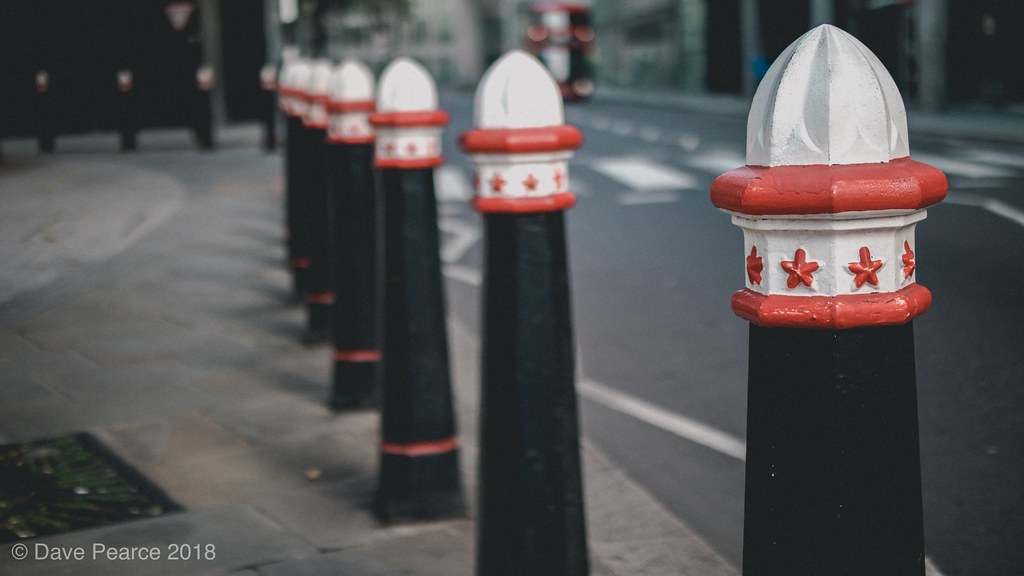
By integrating high-security bollards into urban planning, organisations can elevate their safety protocols without compromising aesthetic appeal. The presence of these robust barriers signals a commitment to safety, fostering a sense of calm and order amid bustling cityscapes. Furthermore, bollards enhance pedestrian safety by creating secure zones, guiding foot traffic away from danger zones, and reducing the risk of vehicle intrusions.
- Strategic placement of bollards effectively transforms vulnerable areas into fortified zones, deterring malicious actors and safeguarding infrastructure.
- They serve as versatile tools in managing urban space, delineating zones for parking, loading, or pedestrian zones with seamless integration.
Ultimately, the utilisation of bollards embodies a profound understanding of human psychology—an unspoken assurance that safety is not an accident but a deliberate design choice. Their presence is a testament to the enduring human desire to protect what matters most, turning potential vulnerabilities into resilient bastions of security.
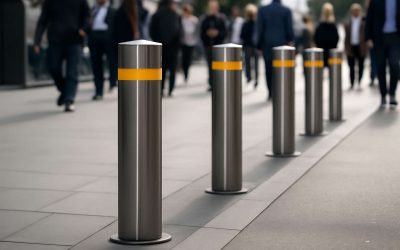
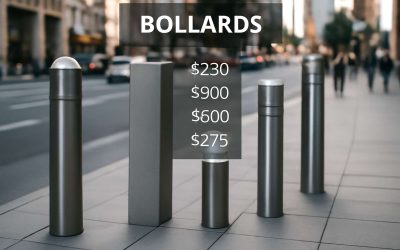
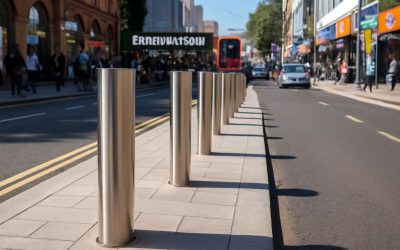
0 Comments